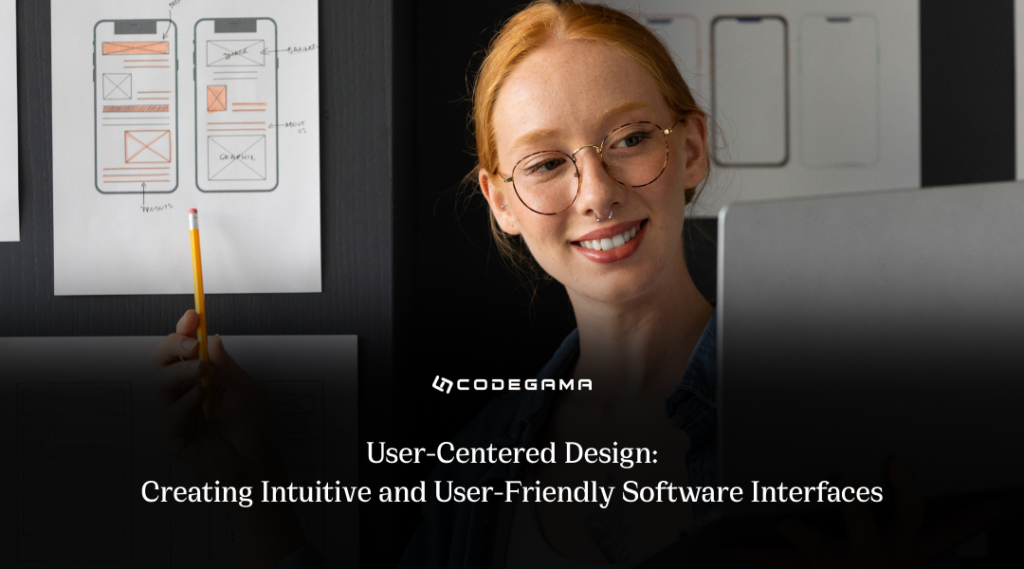
User-Centered Design (UCD) is a software development strategy that prioritizes end-user demands and preferences throughout the design process. Understanding user behaviour, obtaining insights, and putting them into the design to develop intuitive and user-friendly software interfaces are all part of the process.
User-Centered design is critical in software development. UCD guarantees that the finished product satisfies the users’ needs, expectations, and objectives by concentrating on their needs, expectations, and goals, resulting in higher user satisfaction, improved usability, and increased adoption rates. UCD also reduces the risk of producing software that does not resonating with the intended audience.
This blog will go into the various facets of UCD and its importance in software development. It will investigate how knowing the user, designing for intuitiveness, improving usability, testing, and using an iterative design process all contribute to creating software interfaces that prioritize the end user. It will also emphasize the role of emotional connection in design and close with a summary of the important issues presented.
Understanding the user
User research is required to design user-centred software interfaces. This entails acquiring information about the target audience’s qualities, preferences, and habits. Interviews, questionnaires, and usability studies all aid in gaining a better knowledge of user needs and expectations.
User personas are fictitious depictions of various user types within the target audience. They comprise demographic information, goals, motives, and challenges. User scenarios describe unique events or tasks users may face while interacting with software. These tools assist designers in empathizing with users and designing interfaces that meet their specific needs.
Designers can determine the key wants and goals of the target audience by studying user research data and personas. Understanding what users want to do with software aids in designing interfaces that correspond with their goals and improve their overall experience.
Designing for intuitiveness
Making navigation straightforward and consistent For users to navigate the software easily requires intuitive navigation. Designers should strive for a simple and consistent navigation structure that allows users to discover information and complete activities easily. Well-organized menus, breadcrumbs, and logical flow create an intuitive user experience.
Complex processes and workflows are being simplified. Complicated procedures and workflows are frequently involved with software. The user-Centred design strives to make these complexities easier to understand by breaking them down into manageable chunks and offering clear instructions at each stage. Designers may ensure users can easily complete their activities by minimizing cognitive burdens and offering help.
Using efficient information architecture The process of arranging and organizing content within the software is known as information architecture. Designers can put information logically and intuitively using user-centred design, ensuring users can quickly find the information they need. Effective information architecture includes using categories, labelling, and search functionality.
Enhancing usability
The usage of user-friendly interface elements is emphasized in User-Centered Design. Buttons, forms, icons, and menus should be simple to use and understand. Users can rapidly comprehend and interact with the interface if design elements are consistent across the software.
With the development of multiple devices and screen sizes, responsive and adaptive designs are becoming increasingly important. User-Centred Design guarantees that software interfaces are tailored for different devices and platforms, resulting in a consistent and smooth user experience across platforms.
User-Centered design emphasizes inclusive design. Designers should consider the needs of disabled users and guarantee that the program is accessible to all people. This involves supplying alt text for images, adding keyboard navigation, giving flexible font sizes, and complying with accessibility standards.
Conducting user testing
The significance of usability testing
Usability testing is an essential component of User-Centered Design. It entails watching and gathering feedback from people as they interact with software. Usability testing assists designers in identifying usability difficulties, user frustrations, and areas for improvement, allowing them to make data-driven decisions and optimize the interface.
Organizing and carrying out usability testing
Designers must set particular test objectives, devise test scenarios, and recruit representative users to conduct effective usability tests. Designers can gain insights into user behaviour and preferences by properly designing and supervising test sessions.
Iterating in response to user input
User feedback gained during usability testing is extremely useful for iterative design. Designers can examine the input, uncover patterns and common pain points, and modify the software interface iteratively. This iterative method ensures that the interface evolves in response to the demands and preferences of the users.
Iterative design process
User-Centered design complements an agile and iterative software development process. Designers can obtain input early and regularly by dividing the design process into small iterations, allowing for ongoing improvement. This method aids in meeting user needs in a more timely and effective manner.
Usability testing should not be the only source of user feedback. Through feedback channels such as surveys, user forums, and support encounters, User-Centered Design supports continued user participation. This continuous feedback loop allows designers to make informed judgments and improve the software interface throughout its lifecycle.
Designers can apply changes, polish the software interface, and test new iterations with users through iterative design cycles. Each iteration of the interface brings it closer to satisfying the demands and preferences of the user, leading to a more user-centred and advanced software solution.
Conclusion
Prioritizing user-centred design can provide a substantial edge in the competitive software development landscape. Developers may design products that resonate with their intended audience by investing time and effort in understanding consumers, incorporating their comments, and constantly refining the software interface. Prioritizing simple and user-friendly software interfaces improves the user experience, increases client loyalty, and drives the success of software development organizations and their services.
